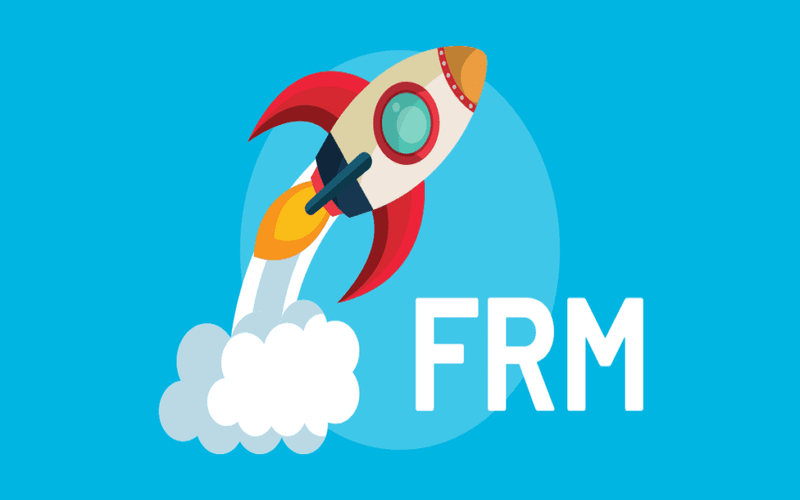What Exactly Is a Financial Risk Manager (FRM)?
The Global Association of Risk Professionals (GARP) issues the Financial Risk Manager (FRM) professional qualification.
The GARP FRM accreditation is the top qualification for financial risk professionals in financial markets worldwide. Candidates must pass two strict tests and work two years in risk management to become FRMs.
FRMs specialize in risk assessment and work with banks, insurance companies, accounting firms, regulatory agencies, and asset management organizations.
Knowing Financial Risk Managers
An FRM identifies dangers to assets, earnings, or company performance. Financial services, banking, loan origination, trading, and marketing employ FRMs. Many specialize in credit or market risk.
To forecast trends in financial markets and the global environment, FRMs assess risk. Risk mitigation methods are also the FRM’s responsibility.
Global Association of Risk Professionals-accredited FRMs are necessary.
Financial Risk Manager Program
Risk management methods and strategies are used for investment management in the FRM test.
Candidates for the FRM designation must pass a two-part test and have two years of financial risk management experience.
Continuing professional development is optional for FRMs. FRM focuses on four strategic risk management disciplines: market risk, credit risk, operational risk, and investment management. Over 90 nations recognize the test, which assesses financial risk managers’ global risk management skills.
The questions apply to real-world jobs. Candidates should comprehend risk management principles and risk managers’ daily work methods.
Part 1 of the FRM exam has 100 questions on four weighted topics:
- Risk management fundamentals (20%)
- Quantitative analysis (20%)
- Financial products and markets (30%)
- Risk and valuation models (30%)
Part 2 of the test has 80 weighted questions on these topics:
- Measure and manage market risk (20%)
- Measure and manage credit risk (20%)
- Operating risk and resilience (20%)
- Management of liquidity and treasury risk (15%)
- Risk and investment management (15%)
- Current financial market problems (10%)
Financial Risk Manager Industry Outlook
The median annual salary for financial managers, including FRMs, was $127,990 in 2018, as the U.S. Bureau of Labor Statistics reported.
FRM employment is predicted to rise 16% faster than the average for all occupations from 2018 to 2028. It says that “the core functions of financial managers, including risk management and cash management, are expected to be in high demand over the next decade.”
Naturally, most FRMs work in finance. Risk management teams are needed in healthcare, engineering, technology, and natural resources.
According to GARP, these ten firms use the most FRMs:
- ICBC
- Bank of China
- HSBC
- Agricultural Bank of China
- Citigroup
- KPMG
- Deutsche Bank
- Credit Suisse
- UBS
- PwC
CFA against FRM
The Chartered Financial Analyst (CFA) qualification is a globally recognized financial designation. Financial analysts see the CFA as the “gold standard” of financial risk managers, similar to the FRM.
The CFA and FRM qualify as financial experts; therefore, they’re often contrasted.
FRM is a more specialist credential than the CFA Charter. The CFA’s investment management topics include financial analysis, corporate finance, stocks, bonds, derivatives, and portfolio management.
The FRM manages operational, credit, market, and liquidity risks.
Both FRM and CFA have distinct requirements.
For FRM accreditation, you must:
- Pass both FRM examinations (Parts 1 and 2).
- I have two years of financial risk expertise
Earning your CFA Charter requires:
- To start the CFA program, you must have a bachelor’s or last year’s degree.
- Pass CFA Levels 1, 2, and 3.
- Join the CFA Institute.
- Investment experience of 4,000 hours
FRM Designation Benefits
There are several benefits to FRM certification.
The program’s reputation comes first. It is considered the risk management industry’s top designation. It shows expertise and knowledge in the subject. The FRM is vital to employers and coworkers.
The demand for risk management professionals will rise as financial markets change swiftly.
The second benefit is education. As noted, FRM certification gives professionals a full understanding of risk management. That includes anticipating, responding to, and adapting to significant hazards.
FRM FAQs
Which is better: CFA or FRM?
A lot depends on your job route. FRMs are typically used in risk-focused managerial jobs. However, most CFA Charterholders are investment analysts, portfolio managers, financial advisers, etc.
Is FRM stronger than CFA?
Though demanding, FRM examinations are more accessible than CFA exams.
FRM Part 1 pass rates average 40%–50%. Between 50% and 60% for Part 2.
The CFA examinations have historically had 40% to 50% success rates for Level 1 and Level 2. Level 3 pass rates average 50%. The CFA is more complex than the FRM due to lower pass rates and an extra test.
How much is FRM?
First-time FRM applicants pay $400 to enroll.
Standard registration costs $750 for Part 1 and $750 for Part 2. Candidates can save $550 for Part 1 and $550 for Part 2 by registering early.
Bottom Line
FRM is the top risk management certification and the worldwide financial risk standard. The demand for competent financial risk managers is considerable and is expected to rise.
FRM’s risk-focused approach gives it an edge over the CFA, which is more prestigious and more challenging to get. The FRM is unmatched for risk management professionals wishing to stand out, improve employment opportunities, and earn more.
Conclusion
- The Global Association of Risk Professionals is a recognized organization for FRMs.
- Central banks, insurance businesses, accounting firms, regulatory agencies, and asset management organizations use FRMs to analyze risk.
- Achieving FRM certification involves a two-part test and two years of financial risk management experience.
- The FRM certification improves risk management, career chances, income, and professional reputation (FRM is the global standard).
- FRM is more specialized than CFA, which is harder to get.












































